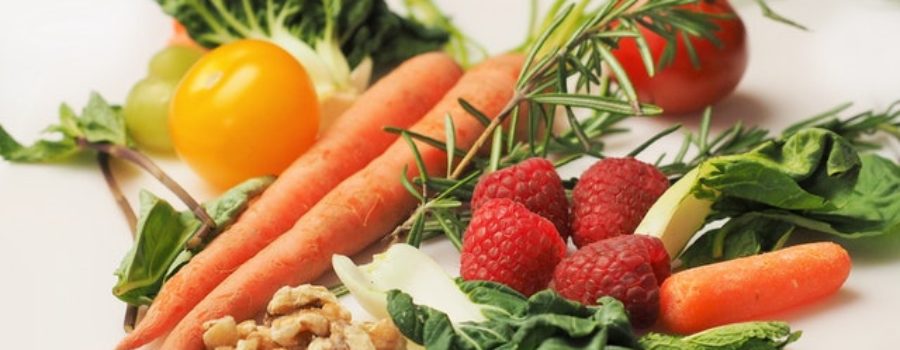Antioxidants in Foods
Antioxidants in foods are common, it becomes a matter of us making the right choices. We are interested in a healthy diet, but there are numerous other reasons (work schedule, family activities), that conflict with our natural tendency to adhere to good, healthy foods.
The positive side is that lately, more and more food establishments offer healthier choices, and we can opt for these when away from home. The other good part is antioxidants in foods are present in multiple items, making it easier to cover the most important ones.
The sources of vitamin E are wheat germ oil, nuts, avocados, dark-green leafy vegetables, cereals, eggs, poultry (mostly thighs). Cooking and storage may destroy some of the natural alpha tocopherol—the active form of this vitamin.
Vitamin C is also known as ascorbic acid, and its natural sources are fresh fruits, green vegetables, and tomatoes. Cooking can destroy and significantly decrease vitamin C content.
Beta-carotene is a member of a bigger class called carotenoids, which are considered provitamins because they can be converted to active vitamin A. Beta-carotene is converted to retinol, which is essential for vision. The most important sources are the many yellow and orange colored vegetables (carrots, sweet potatoes, peppers, squash, pumpkins), and fruits (cantaloupe, mango, papaya, apricots), but also the dark green leafy vegetables (spinach, collards, kale), peas, and broccoli. Excessive amounts of beta-carotene in the diet, can lead to an orange discoloration of the palms and soles, but it’s nothing to be alarmed about, just a “cosmetic” effect.
converted to active vitamin A. Beta-carotene is converted to retinol, which is essential for vision. The most important sources are the many yellow and orange colored vegetables (carrots, sweet potatoes, peppers, squash, pumpkins), and fruits (cantaloupe, mango, papaya, apricots), but also the dark green leafy vegetables (spinach, collards, kale), peas, and broccoli. Excessive amounts of beta-carotene in the diet, can lead to an orange discoloration of the palms and soles, but it’s nothing to be alarmed about, just a “cosmetic” effect.
Lutein and zeaxanthin, also carotenoids, are two powerful antioxidants that concentrate in the retina, and medical studies found that both decrease the risk of developing age-related macular degeneration—leading to vision loss. They are naturally found in high amounts in kale, spinach, turnip greens, collards, Swiss chard, broccoli. Less, but still significant amounts are present in peas, romaine lettuce, Brussels sprouts, corn, tangerines, and oranges.
Lycopene is another carotenoid and its most important source is tomatoes. Surprisingly, lycopene in cooked tomatoes, tomato juice, and tomato sauce is even better utilized by the human body than from raw tomatoes. Diets high in lycopene may be possibly protective for prostate cancer.
Selenium is part of the trace minerals we need, and found in vegetables (like garlic, onion, grains), nuts, seafood, meat, liver, yeast. It is very important for the function of numerous metabolic enzymes, including several antioxidant enzymes and glutathione. Zinc, another one of the trace minerals, has anti-inflammatory and antioxidant properties; is found in oysters, lamb, beef, pumpkin seeds, cashews, dark chocolate.
Omega-3 and omega-6 fatty acids are essential long-chain polyunsaturated fatty acids that our metabolism cannot produce, therefore they have to be obtained from food. We need to maintain the right balance between these, meaning the amount of omega-6 should only be 2 to 4 times higher than omega-3 (instead of 20 times, as it’s noticed in American diet). Although technically speaking not part of the antioxidants in foods, they can enhance our body antioxidant capacity, beside many other benefits.
Omega-3 fatty acids (under the abbreviations EPA and DHA), can be found in fish like salmon, sardines, mackerel, herring . With fish it’s always important to avoid those that can contain high in mercury. This depends not only on the species of fish, but also on the ocean region or farm where it was obtained from; I use the EWG’s website for guidelines.
. With fish it’s always important to avoid those that can contain high in mercury. This depends not only on the species of fish, but also on the ocean region or farm where it was obtained from; I use the EWG’s website for guidelines.
Omega-3 are also found in walnuts, nut oils, and flaxseeds. Omega-6 fatty acids (alpha linoleic acid—ALA) are found in eggs, poultry, vegetable oils, nuts, cereals; our body uses ALA to produce EPA and DHA. Omega-3 fatty acids help reduce inflammation, including in arthritis, but seem to also help prevent cardiovascular diseases (heart attacks and strokes), degenerative neurologic conditions and depression. Omega-6 fatty acids are helpful in diabetic neuropathy, psoriasis, eczema, and osteoporosis; they tend to promote inflammation—beneficial to a certain extent.
Glutathione, considered the most powerful antioxidant, is not really part of the antioxidants in foods. Instead, is produced (and recycled) by our body from 3 amino acids (derived from the proteins we eat), and sulfur chemical groups. Since glutathione-containing supplements are degraded in the intestine, one way to help refresh this antioxidant’s production is by consuming proteins (organic meats, poultry and organic dairy—ideally from pasture fed cows), and sulfur foods (cabbage, cauliflower, broccoli, kale). There is a probiotic strain Lactobacillus fermentum ME-3, that seems to boost glutathione production.
Plant polyphenols are mostly present in numerous fresh fruits, tea, red wine and coffee, but vegetables, legumes, and cereals are also good sources, as are cocoa and dark chocolate. Leafy vegetables contain more in the dark-green outer parts of their leaves, while in fruits, more antioxidants are concentrated under the skin. Citrus fruits are richer in antioxidants in the spongy-white, inner portion of the peel, and in the membranes separating the slices. In general, storage and cooking decrease the antioxidants’ amounts.
It is quite possible that’s why the Mediterranean diet, relying on lots of fruits and vegetables (grown with less toxic pesticides and herbicides—I might add), may be responsible for the better health of the people habitually consuming it. Polyphenol antioxidants are a large category of antioxidants and are classified in 4 subcategories: phenolic acids, flavonoids (with 6 subclasses, one being soy isoflavones), stilbenes and lignans. I just wanted to mention these classes because their names appear in many articles.
Not only the numbers of polyphenol antioxidants and their structures are mind-blowing, but there are many differences and influences on how our body absorbs and metabolizes them, and in which tissues they accumulate—here is where they put into action their biological effects. Studies revealed they accumulate more in the tissues where they are metabolized, meaning the intestine and liver.
I also have to add that our gut-friendly bacteria can significantly affect some antioxidants metabolism, inducing even more variability to the entire process. These are all reasons why it becomes very difficult to fully understand and explain the beneficial role of the many plants’ polyphenols. Even with the available supplements, it’s extremely important to adhere to a healthy diet and avoid processed foods.



